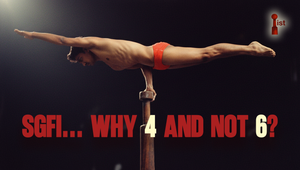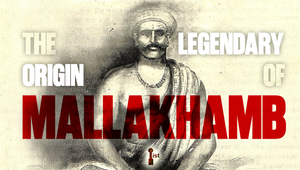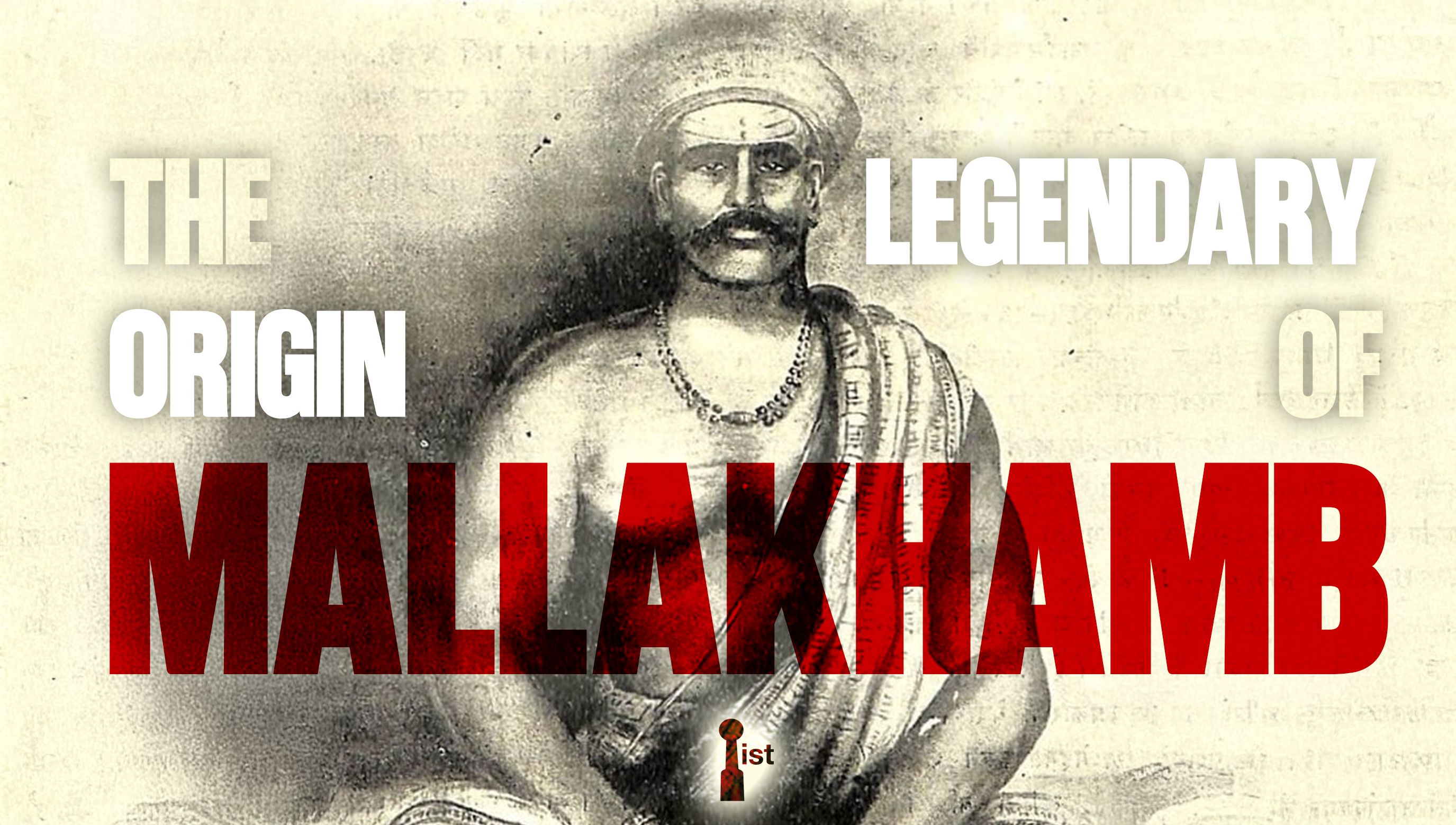
The Legendary Origins of Mallakhamb: The Ancient Indian Sport of Strength and Art
India is a land that breathes culture and tradition. From spices that changed global trade routes, to yoga that heals millions, to cinema and cricket that capture imaginations—its gifts to the world are endless.
But hidden among these treasures lies something extraordinary. A sport both fierce and graceful. A sport where the human body becomes poetry in motion. A sport called Mallakhamb.
If you’ve ever seen an athlete spin around a pole, hanging upside down with impossible balance, or glide through the air on a rope as if gravity didn’t exist—you’ve witnessed Mallakhamb. It’s a spectacle that’s equal parts athletic feat and art form.
But the story of Mallakhamb isn’t just about training. It begins with a legend.
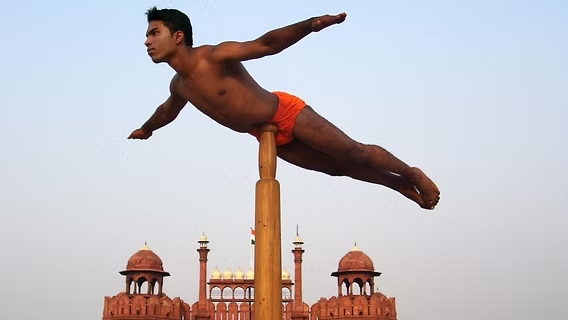
The Challenge No One Dared to Accept
The year was the late 1700s. The Nizam of Hyderabad was proud of two men in his court: Ali and Gulab—giants of wrestlers, said to be nearly eight feet tall, their muscles carved like stone. They were undefeated. No one in India—or the world—had ever managed to throw them down.
When they arrived at the court of Peshwa Bajirao II in Pune, they issued a thunderous challenge:
“Bring us your best wrestler. Let him face us—if he dares.”
The royal court fell silent. Fifty-two wrestlers stood frozen, none willing to risk their life and honor. The Peshwa’s pride was at stake, and defeat seemed inevitable.
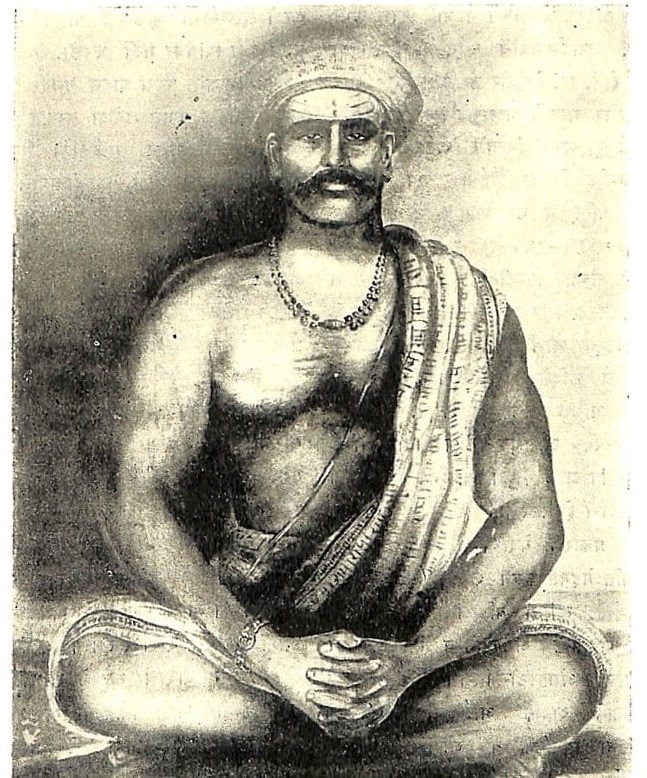
That’s when one man stepped forward. Not a hulking wrestler, but a teacher. The court’s physical instructor—Balambhatta Dada Deodhar.
The Dream That Changed Everything
Balambhatta Dada asked for time. He returned to his hometown of Kothure, in Nashik, carrying the burden of his people’s honor.
Day after day, he trained. He prayed to his ancestral goddess, Saptashrungi, for strength. And then—one night—everything changed.
The goddess appeared in his dream and whispered:
“Worship Lord Hanuman, the god of power. Only then will victory be yours.”
That very night, Lord Hanuman himself came to Balambhatta—in the form of a monkey. On a wooden pole, the divine monkey performed dazzling acrobatics, twisting, leaping, and balancing in ways no human could imagine.
When Balambhatta Dada awoke, his heart was racing. He knew what he had to do.
He built the same wooden pole from his dream. He trained on it day and night, mastering movements inspired by Hanuman’s divine performance. What began as prayer became power. What began as desperation became destiny.
The Day of Reckoning
The court was overflowing with spectators on the day of the fight. Whispers ran through the crowd: Could this teacher really fight the giants?
Ali stepped forward first. He smirked at the smaller man before him. But within moments, his confidence turned to confusion.
Balambhatta Dada moved unlike any wrestler Ali had ever seen—his techniques drawn from the pole, swift and fluid, almost otherworldly. Then, in a flash, Balambhatta Dada locked Ali’s neck between his legs, spun, and slammed him to the ground.
Ali—the undefeated titan—was defeated in minutes.
The crowd erupted. The impossible had just happened.
Seeing his partner’s downfall, Gulab panicked. Instead of stepping forward, he fled. The match was over before it began.
The Peshwas cheered. The teacher had saved their honor. From that day on, he was honored as “Dada.”
The Birth of Mallakhamb
The wooden pole Balambhatta Dada had built became more than a training tool. It was a bridge between worship and warfare, between art and athletics. Wrestlers—mallas—began to train on it, and soon, the practice earned its name: Mallakhamb, the wrestler’s pole.
What started as a weapon of survival grew into a tradition. And today, centuries later, it has evolved into a modern sport practiced worldwide—a breathtaking blend of strength, flexibility, and artistry, standing proudly alongside gymnastics.
More Than a Sport
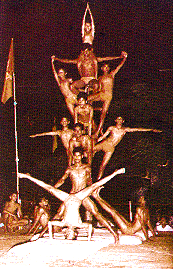
Mallakhamb is not just exercise. It’s a story of resilience. A reminder that when tradition meets creativity, legends are born.
The pole that once saved a kingdom’s honor now inspires athletes across the globe. And as the sport continues to grow, it carries with it the spirit of its origins—the courage of Balambhatta Dada, the blessing of Hanuman, and the soul of India.

